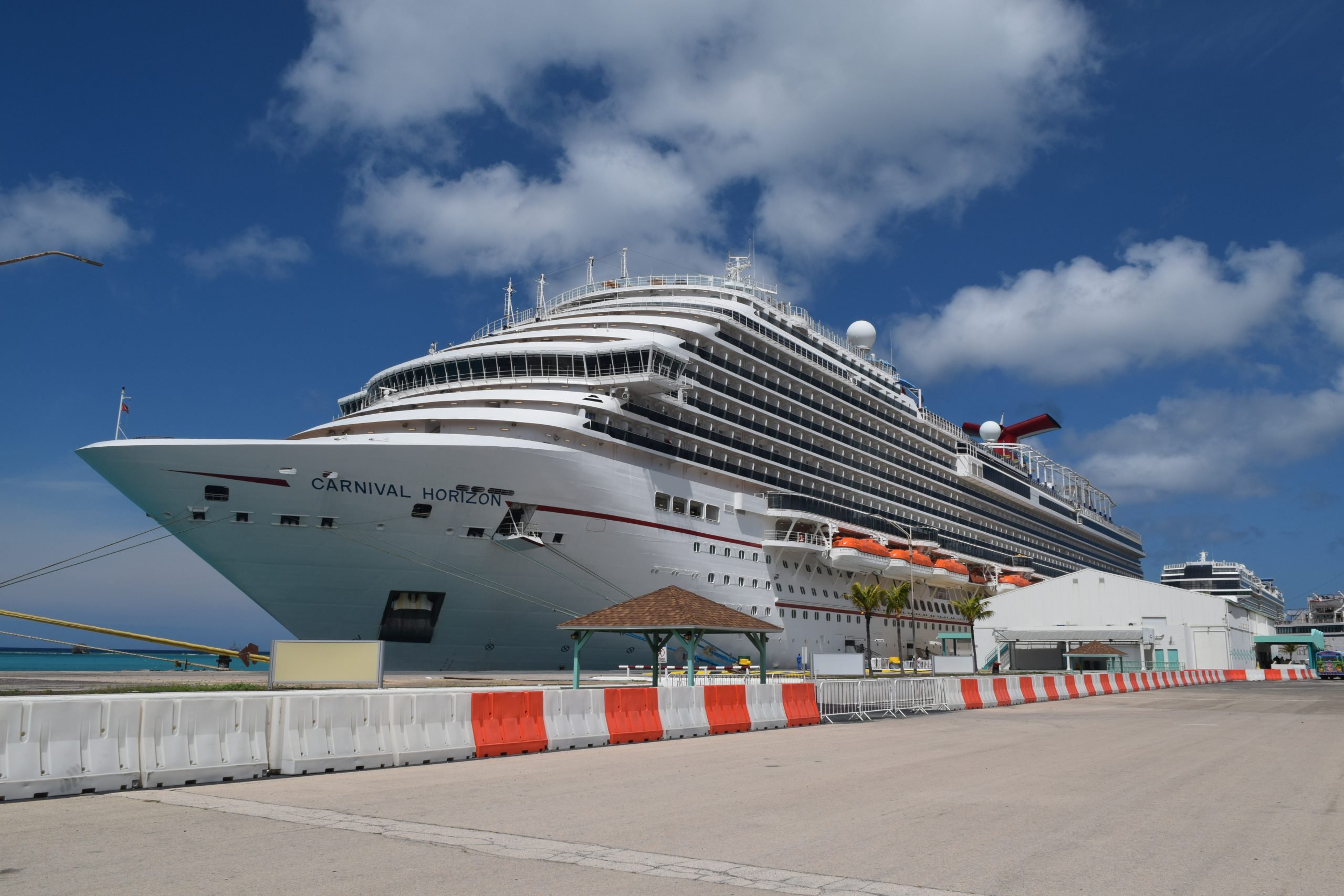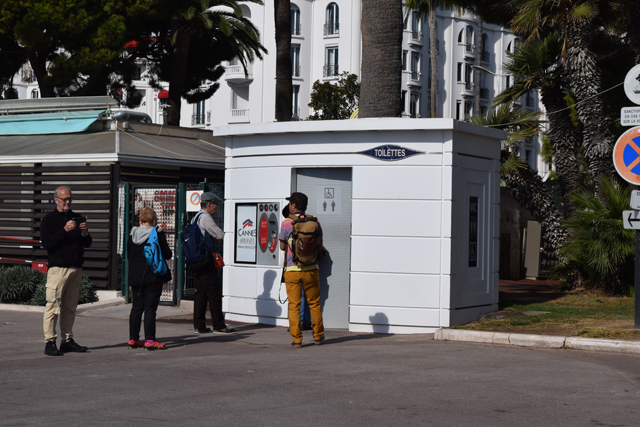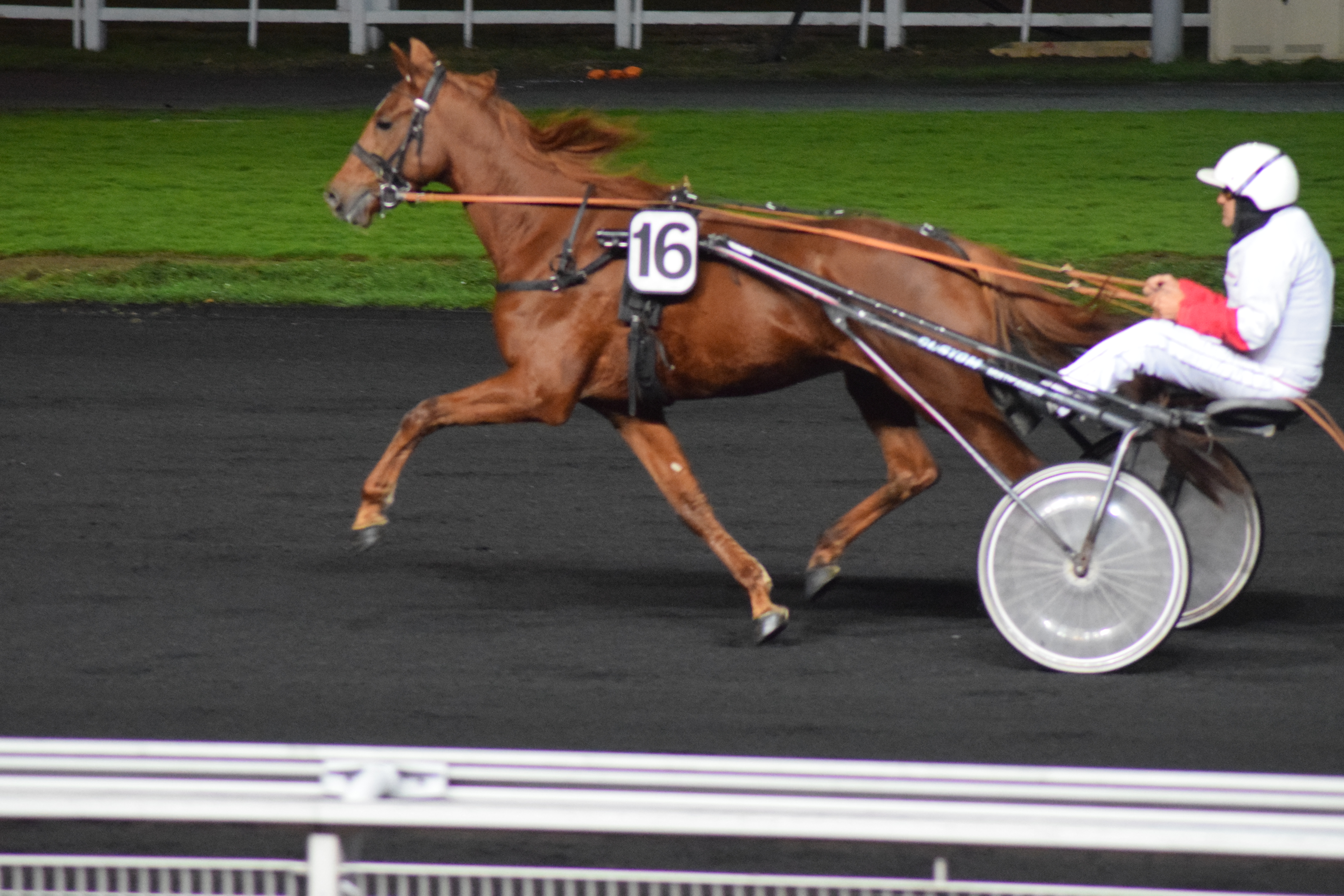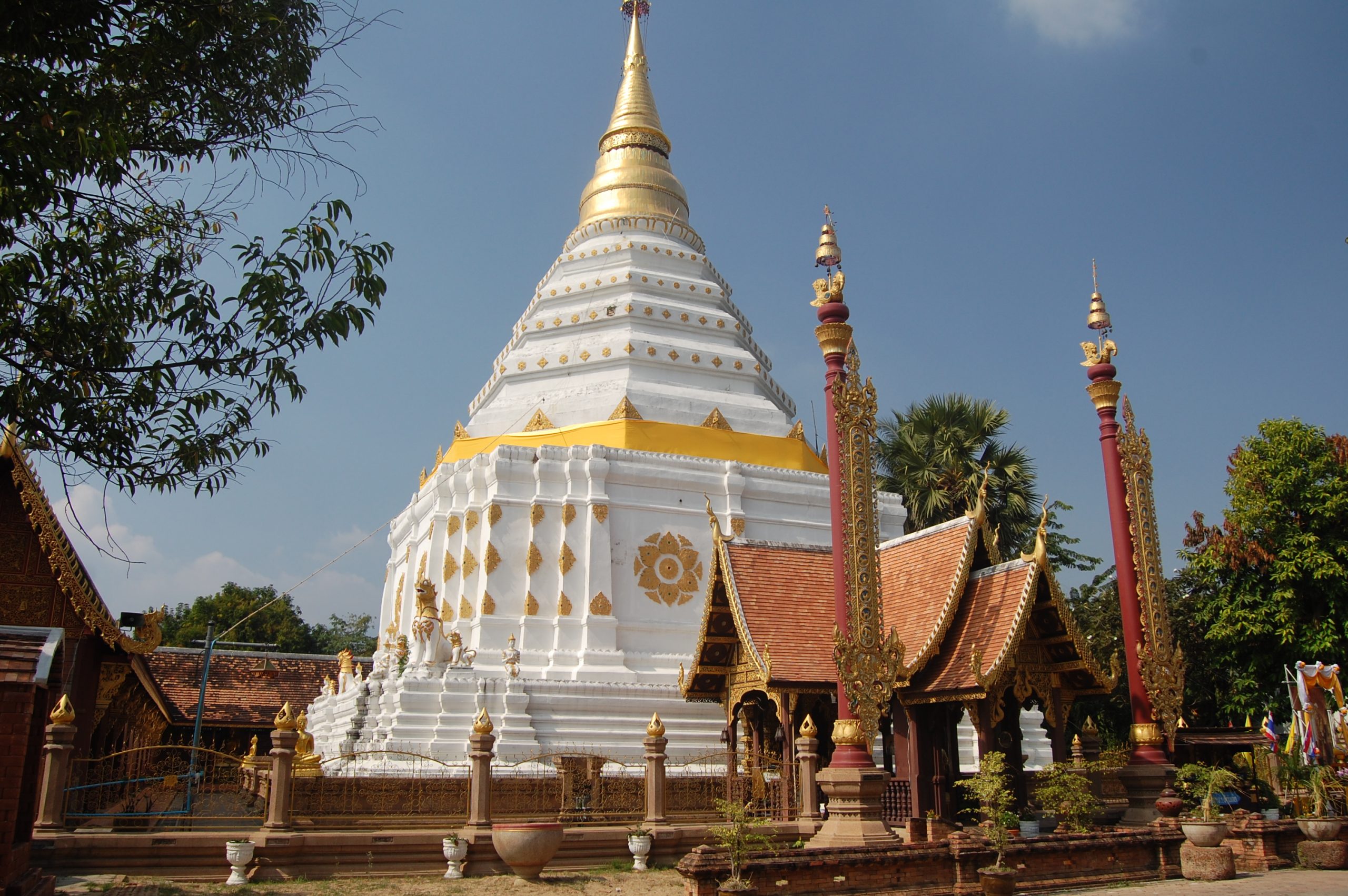
Chiang Mai Walking Tour Photo-essay
Chiang Mai Walking Tour Photo-essay
I did a Chiang Mai Walking Tour Photo-essay for an online magazine about 7 years ago. The photographs were taken in December 2010. I spent about a month in Thailand with 2 friends joining me for the second week and another friend joining me the last week. The third week I went to Chiang Mai in the northern highlands of Thailand. Bangkok to Chiang Mai is about 450 miles by road. A bus will get you there in about 10 hours depending on the time of day it could be 12 hours. Your bus fare would range from $15 to $30 depending on the class of service of the bus. Airlines will get you between cities in a little over an hour at $50 to $75.

Getting There
Many visitors believe that the only way you should travel to Chiang Mai is by train. It takes longer than the bus, 12 to 13 hours. It can cost more than the bus, but it is an experience. This might take a little planning, but you can get an overnight air-conditioned sleeper car for $30. Trains often sell out, but if you make a reservation the week before, you will likely get what you want.
My trip had me on train 13 leaving the Hua Lamphong train station in Bangkok at 7:30 pm. There is an MRT station there as well. So getting to the train station is straightforward. The train arrives in Chiang Mai at 8:40 am. Shortly after the train departed, the staff came through will menus for meals and snacks. Placing an order they served it shortly thereafter. A table could fold up between you and the seat across. While there is seating for two on each side, only one seat is occupied on the sleeper trains. The set of lower seats fold down into a bed. While above, a Pullman-style bed pulls down.
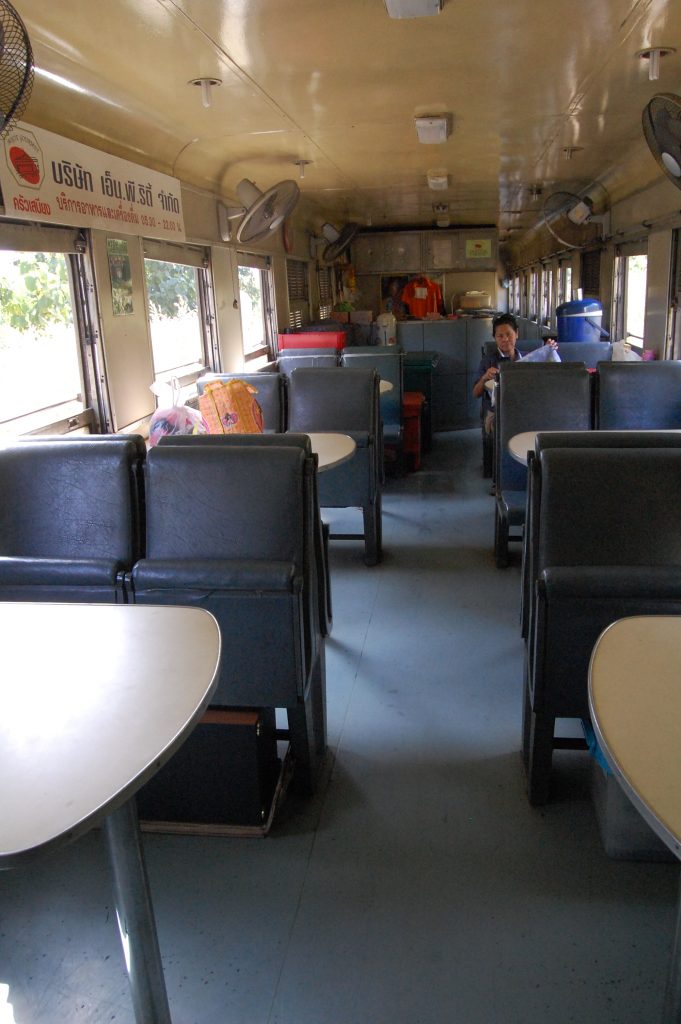
Not long after dinner was served, the train attendance moves through the car and converted the seats to beds. I had an upper berth, which was very comfortable and had a small fan. In the morning they came back and converted the beds back to seats.
There was also a dining car opened all night.
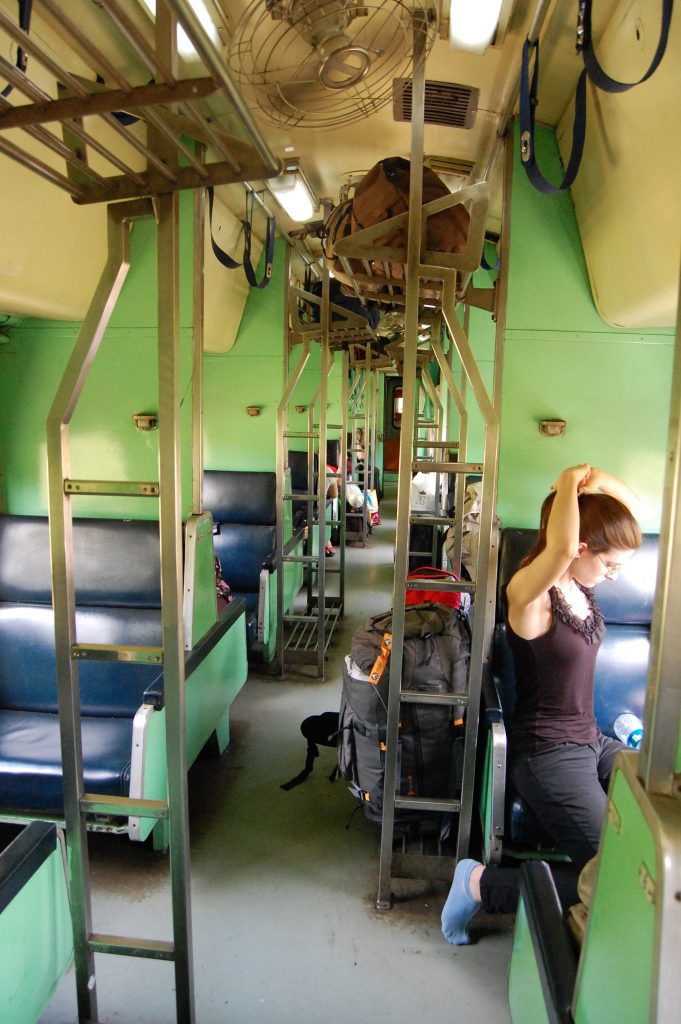
The article below the divider is the text of a photo-essay. I have included most of the original photos, and I have added a few more.
Start your Chiang Mai walking tour anywhere.
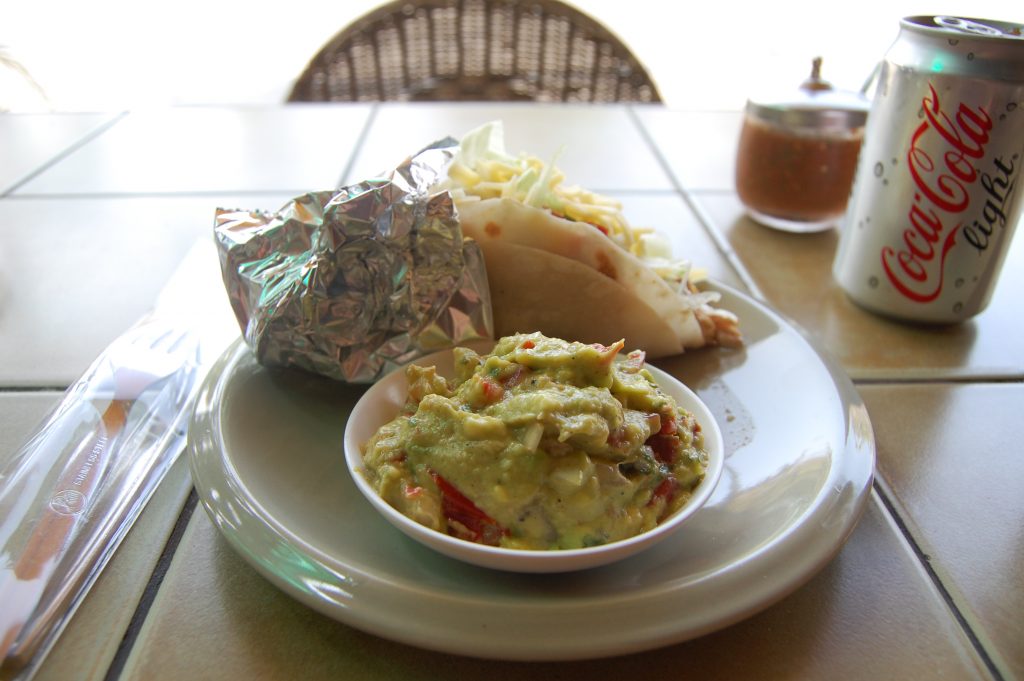
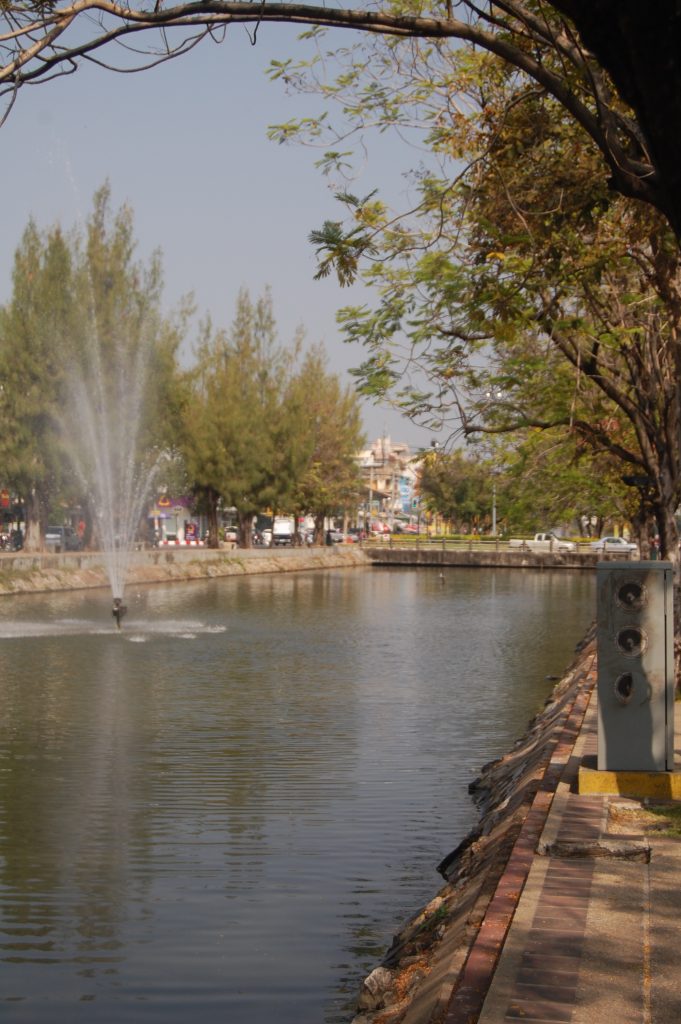
Chiang Mai Walking Tour
Chiang Mai in the northern part of Thailand is a city with a population of only 200,000 but is a metropolitan area of about a million. Sitting in the northern highlands it attracts millions of tourists each year both domestic and international. In many people’s minds, Thailand as a tourist destination has a stigma against it as it is widely known as a sex tourism destination. Chiang Mai has largely escaped that viewpoint offering a range of both natural and cultural attractions.
The 700 year old “New” City
In the northern Thai dialect, the name Chiang Mai means new city. It was given that name when the city was established in 1292, 200 years before Columbus set sail for the new world. The city was set up in a rectangular shape however it is often described as a square with each side being slightly over 1.5 kilometers in length. Roughly one mile on a side. The city was laid out on the compass points, was walled and outside the wall was a moat. Measuring the city at the moat is most likely the reason for the difference in shape and size reported. As the population grew development start first outside the east gate that leads to a nearby river.
Being a highly religious time and a religious people there was a number of Buddhist temples that were developed at the same time as the city was built and expanded. Today there are over 300 temples in the city and about 30 within the one square mile walled city. Over the centuries much of the wall has been destroyed by the effects of war, negligence and the ravishes of time. Starting in the 1960s parts of the wall have been stabilized while other parts and features of the wall have been renovated using historical documents as a guide. Today’s visitors can walk outside the wall for a nice four-mile (6Km) walk enjoying both the ancient and modern aspects of the city.
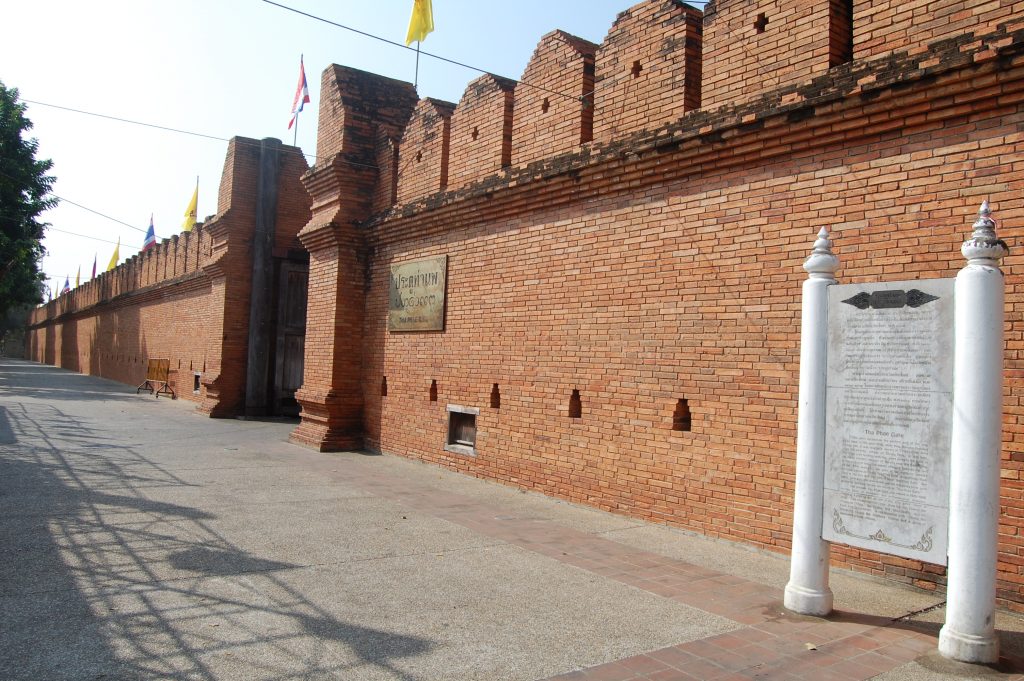
The East Wall of Central Chiang Mai
The east gate named “Tha Phae” ( sometimes you will see it spelled as Tha pae both versions as one or two words) makes a great starting point for a walking tour around the old city perimeter. This is the gate that leads to the river and was where the original settlement first expanded. It was the main entrance for the common people to enter and leave the city. The gate and the wall area around it have been restored to the original condition, the work was done from historical documents including a rare photograph from 1899.
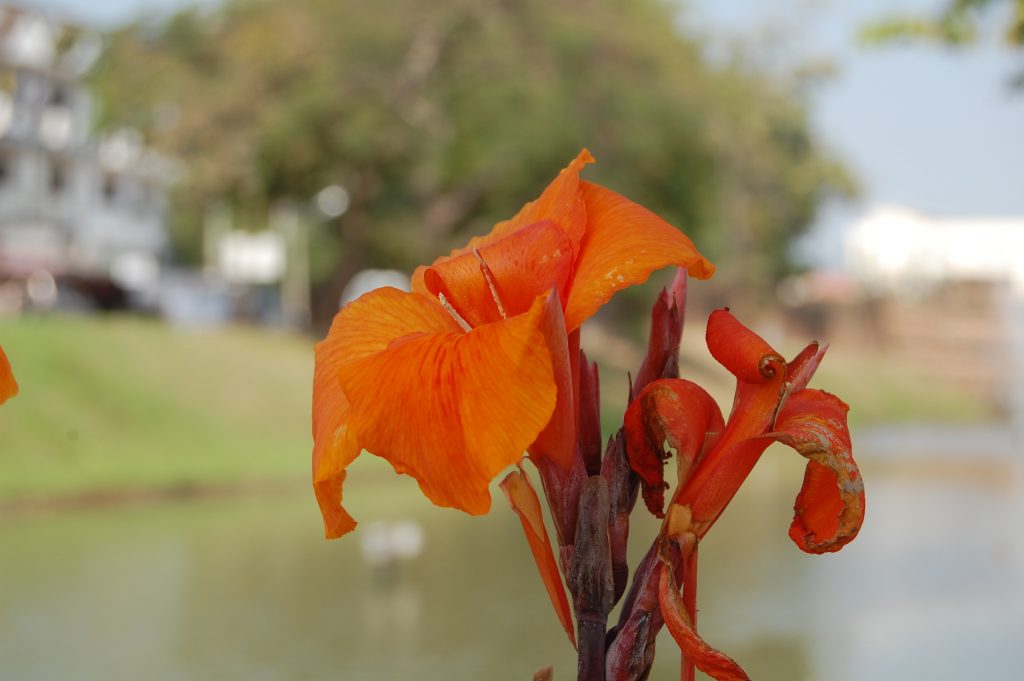
The renovators deviated from the original plans slightly as the moat does not cover a portion close to the gate and a park is currently there used for different events. Heading north from the gate you shortly come to the start of the moat. No longer effective for defense the moat has become a greenway around the city. There are grass and gardens around the city centering on the moat. This feature has made the moat a popular area for locals to relax.
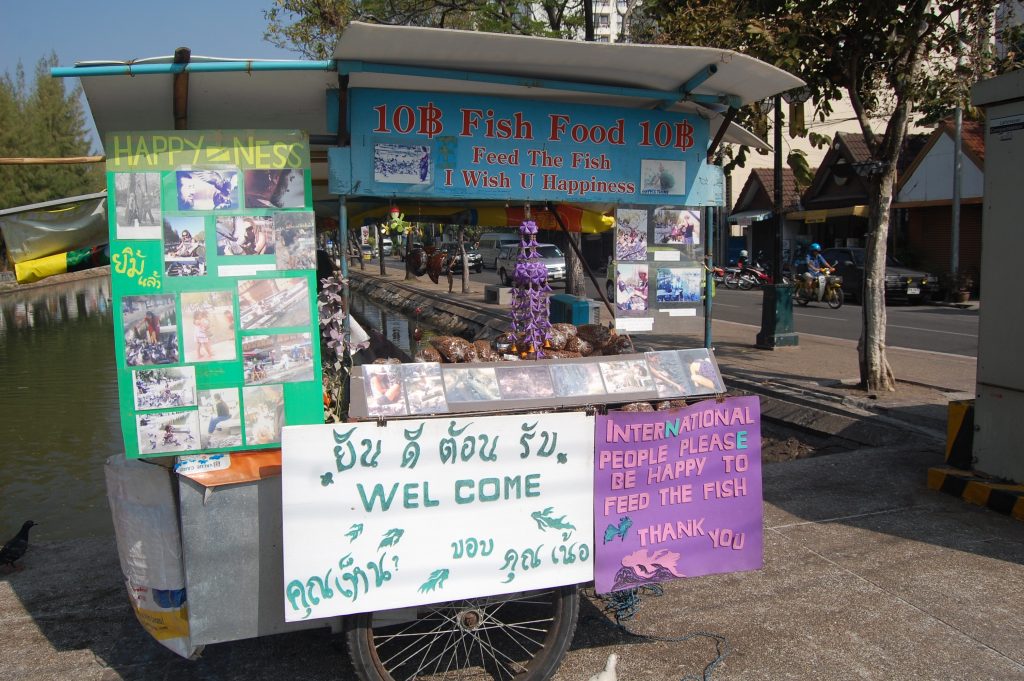
As I started my wall around the moat, the stand of a vendor of fish food caught my eye.
There is a photograph of it here showing his hand-lettered signs and photographs of tourists feeding the fish in the moat and the birds. There are sidewalks along both sides of the moat also which makes for a very pleasant walk.
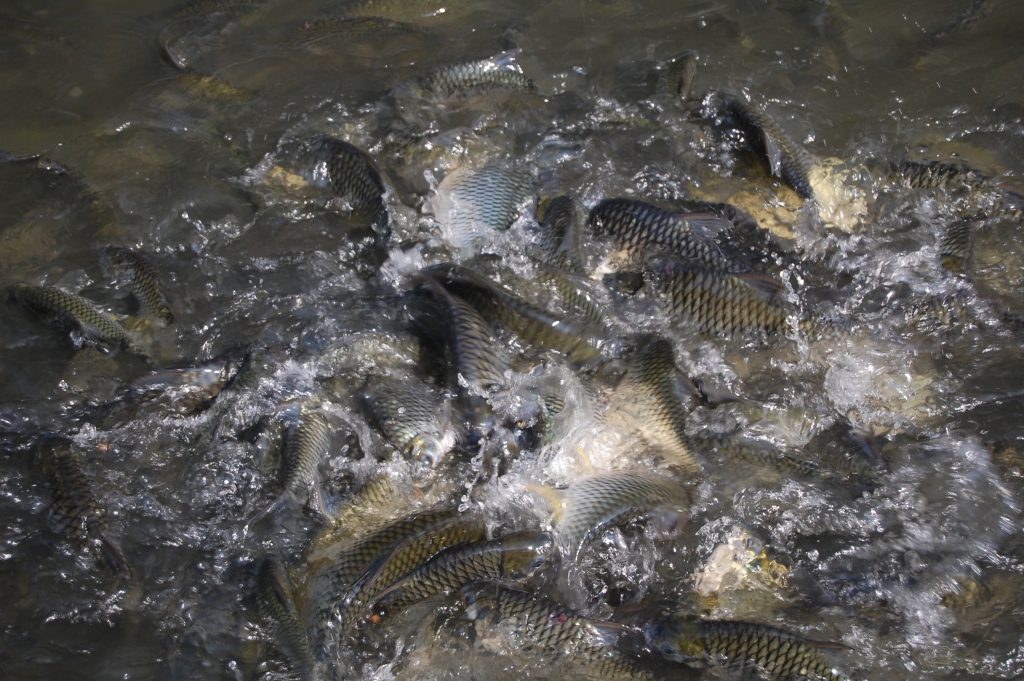
They say that a photograph is worth a thousand words, so instead of ten thousand words do describe the three-quarters of a mile to the north wall, I will let ten photographs do the talking.
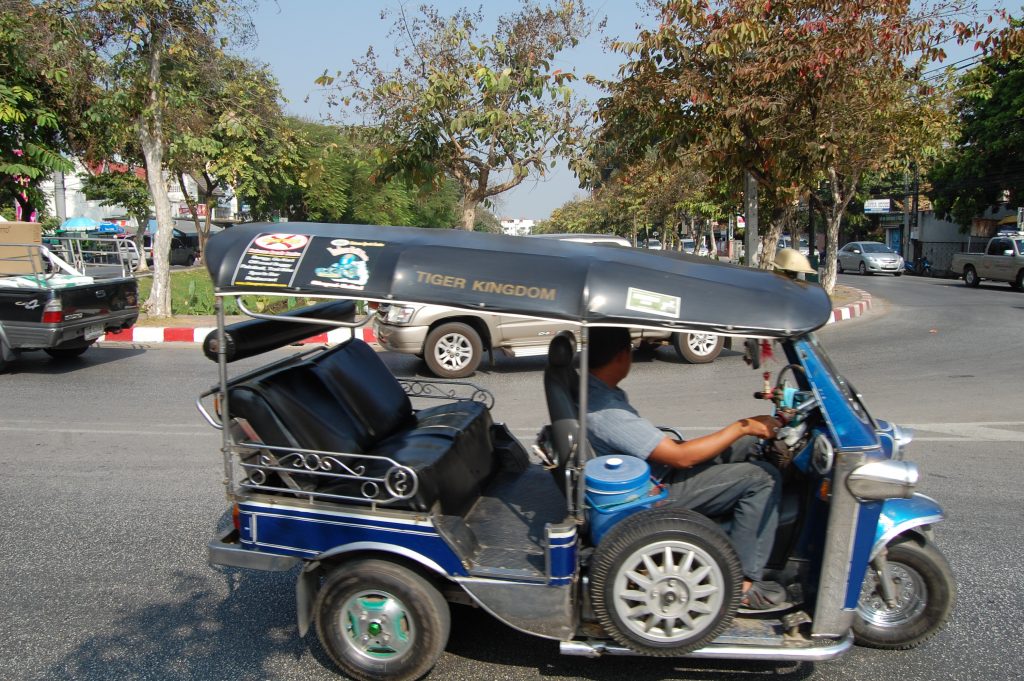
Getting Around Town
Among the photographs are images of two of the most common methods of public transportation in the city, the Tuk Tuk and the Songthaews. The tuk tuk is a three-wheel device that will get you anywhere you want to go. Like New York City cab drivers, Tuk tuk drivers have a bad reputation, some of it highly deserved. Always agree on a price before entering a Tuk tuk and insure if it is per person or per trip. Additional Tuk Tuk drivers have been known to guide tourists to establishments that charge very high fees and will use violence to ensure payment.
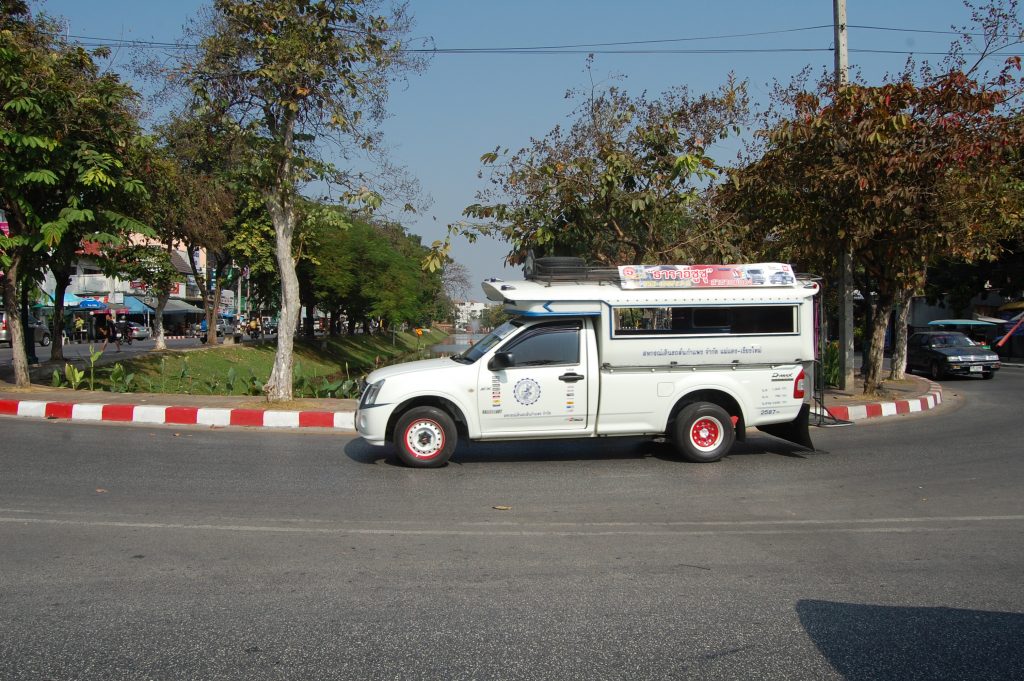
The Songthaews ply routes around the city, simply flag one down and tell the driver your destination, he will let you know if it is on his route. Pay the driver at the end of your trip. The word Songthaews means two benches, which describes the seating in these pickup truck-style vehicles.
The North Wall
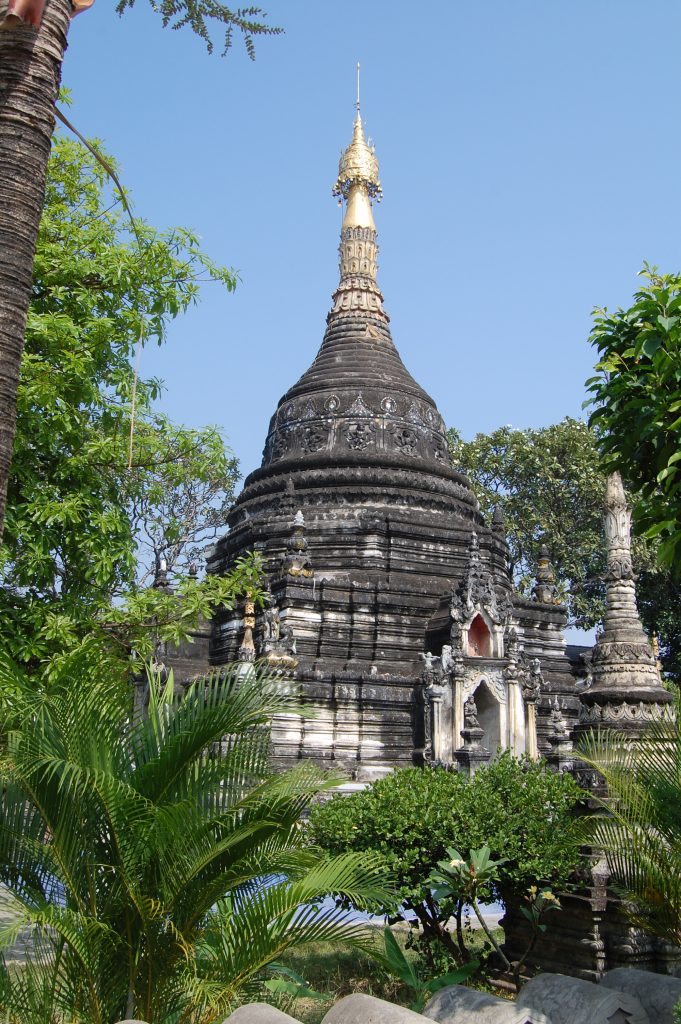
The north wall is the “head” of the city and originally the north gate was used only by the royals. The area around the north wall today is an interesting mixture of modern commercial buildings, residential areas, and historical temples. Unlike temples and churches of other religions most Buddhist temples are compounds with many building and residents for the monks and in some cases the nuns. In the late 1800 a group of Buddhists from the state of Shan founded a monastery in a grove of Pao trees outside the city. The monastery became known as the temple in the Pao grove or Wat Pa Pao.
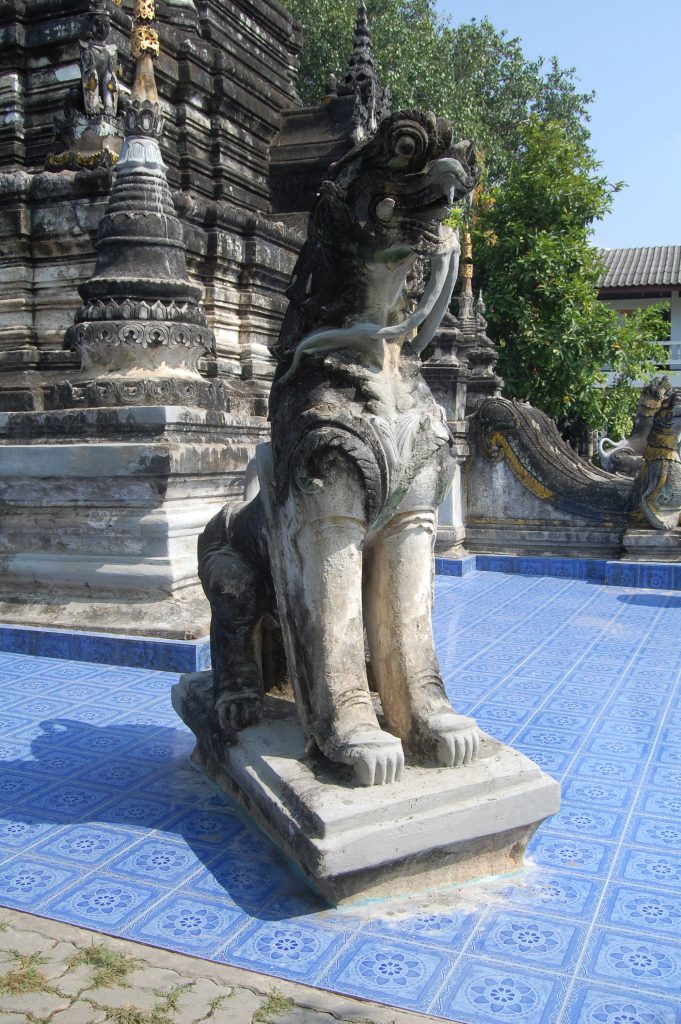
In 1891, the king and one of his consorts who were from Shan built the main buildings. You may visit this and any of the other temples just remember to wear appropriate clothing and shoes must be removed before entering a temple.
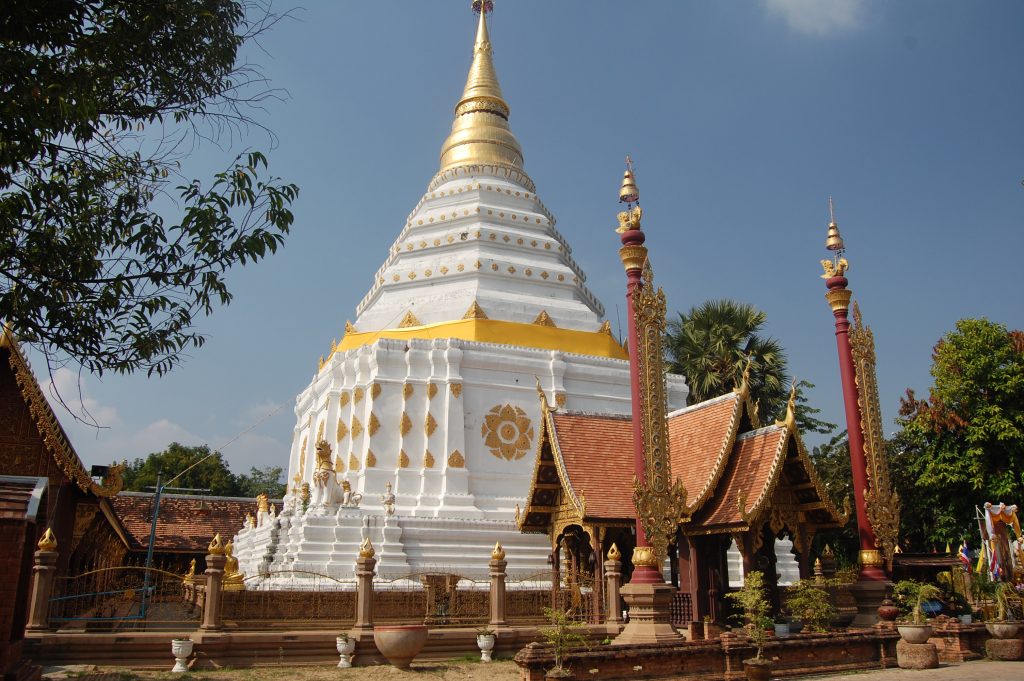
Wat Chiang Yuen is another impressive temple across the moat from the north wall. It is not clear how old the temple is as it seems to predate the new city.
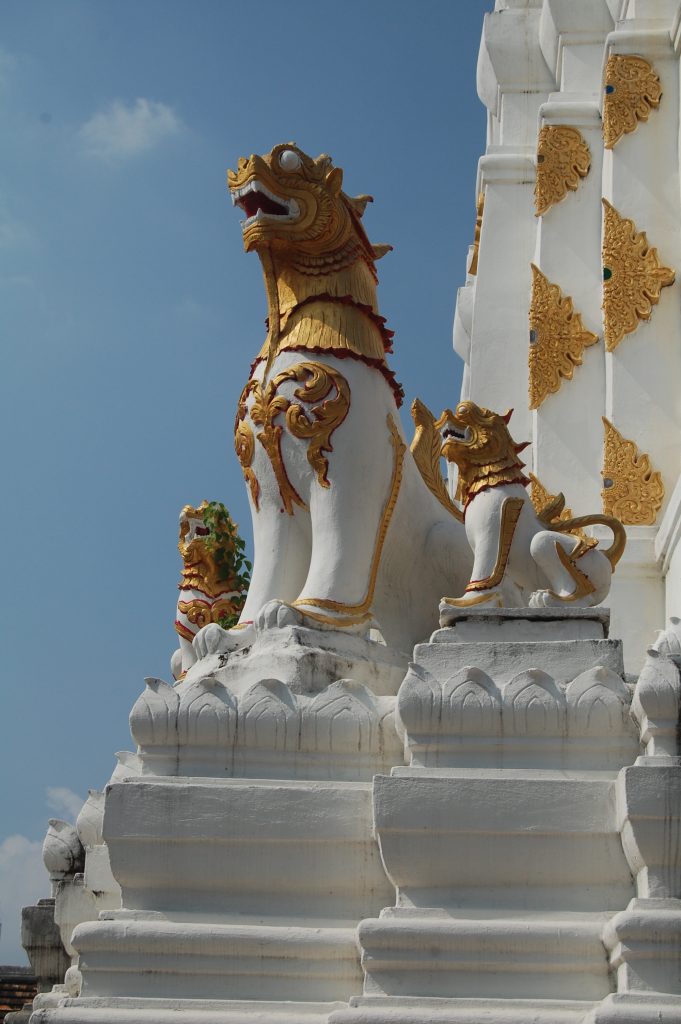
Wat Lok Molee is the next major temple we come to as we continue west along the north wall. The age of the temple is unknown but the name appears in records from 1367. The Chedi was built in 1527. Chedi is also known as Stupa are dome shape buildings of a semi hemisphere shape and are meant to house the temple’s most significant relics.
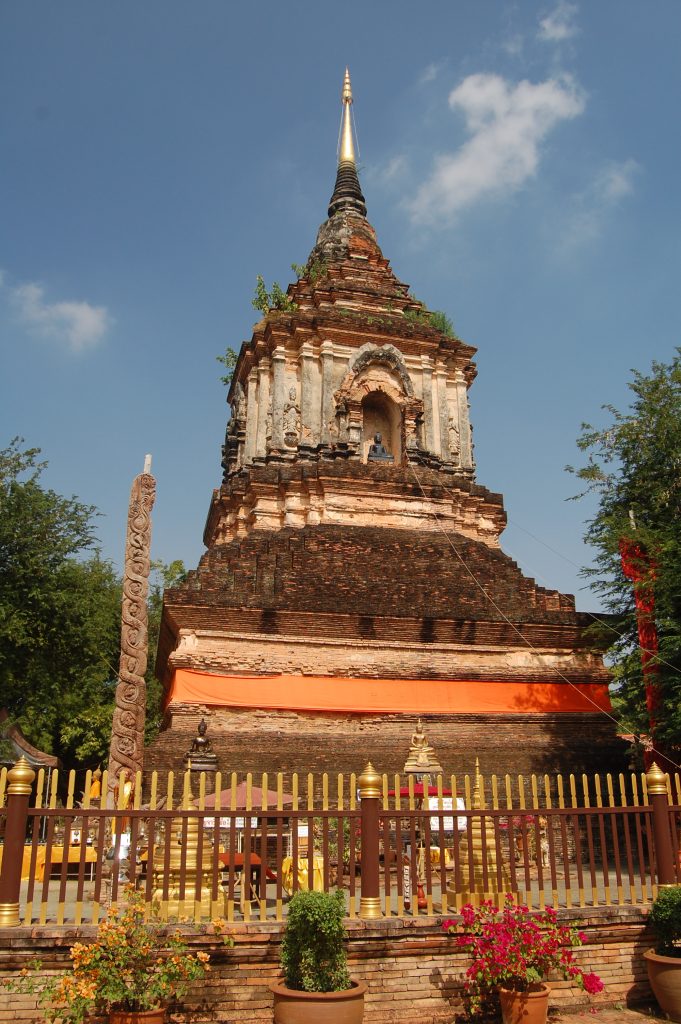
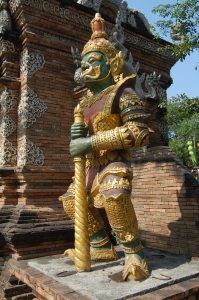
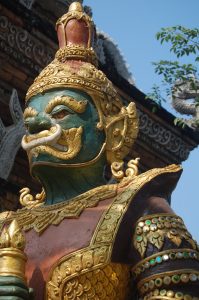
The West Wall
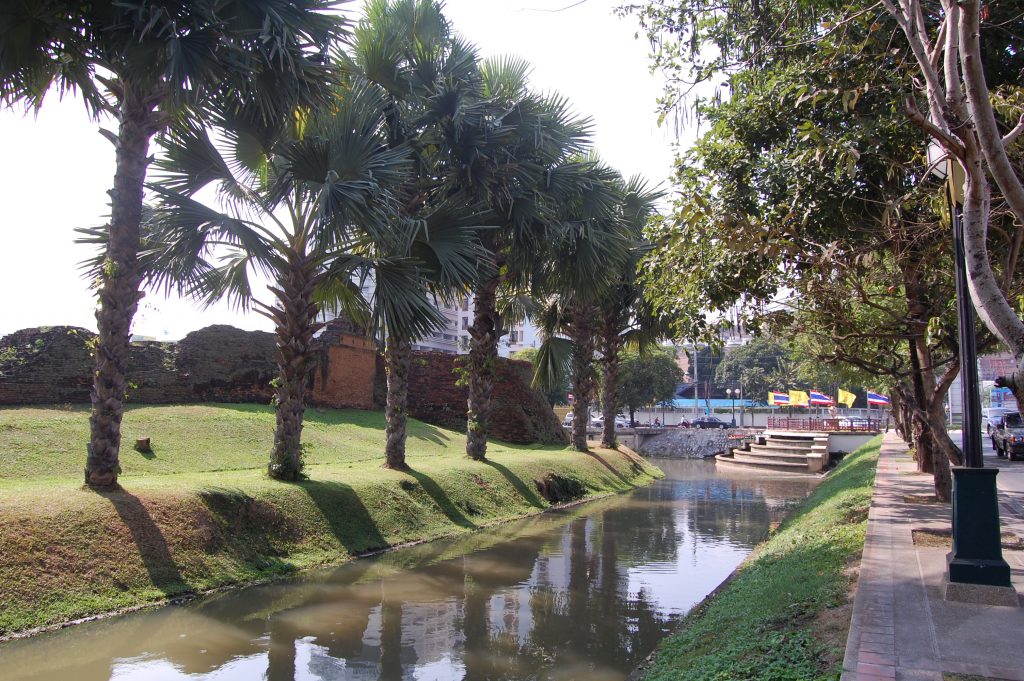
The west wall does not have the historical significant as the two walls we have already passed. The major exception is the northwest corner also called the Hua Lin corner. Hua for head and Lin for aqueduct gives the corner its name as this is the point where an aqueduct entered the city bringing in fresh water. The current corner was renovated in 1800. Near this corner along the west wall is another section of the original wall as it was restored at that time.
The South Wall
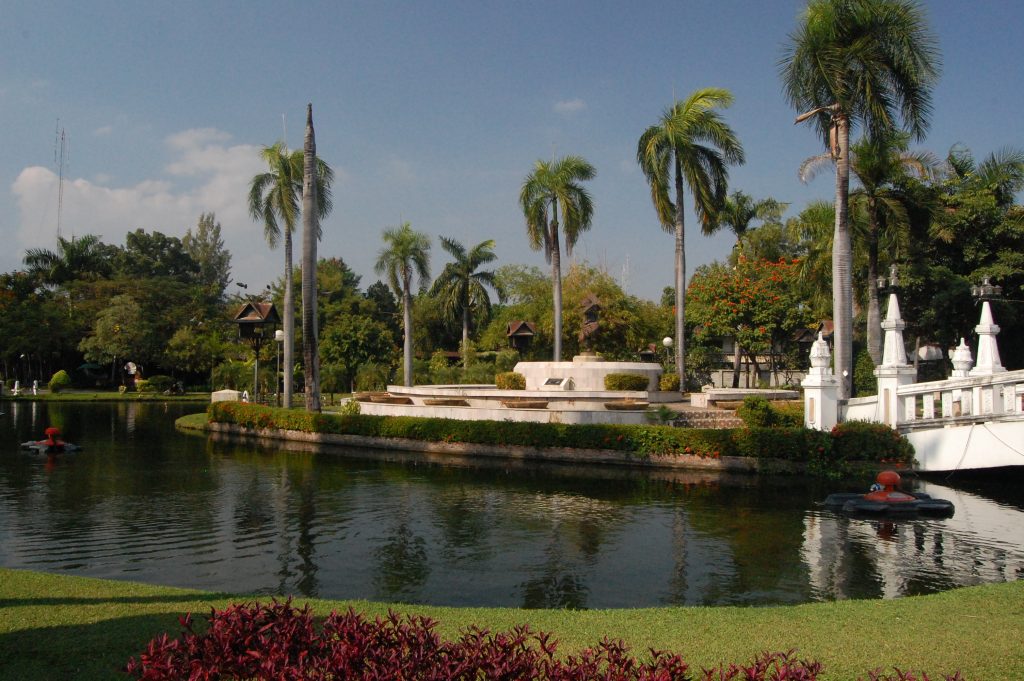
The southwest corner is basically gone with just a small building which may have been a guard post remaining. Small sections of the wall exist, but the corner now is a park, with a small lake and space to relax, you can rent or buy bamboo mats and lay in the grass and enjoy the day. The south wall had one major difference from the others in that there were two gates into the city, and represents the feet of the city. Records indicate that the area south was mostly farmland.
The East Wall Again
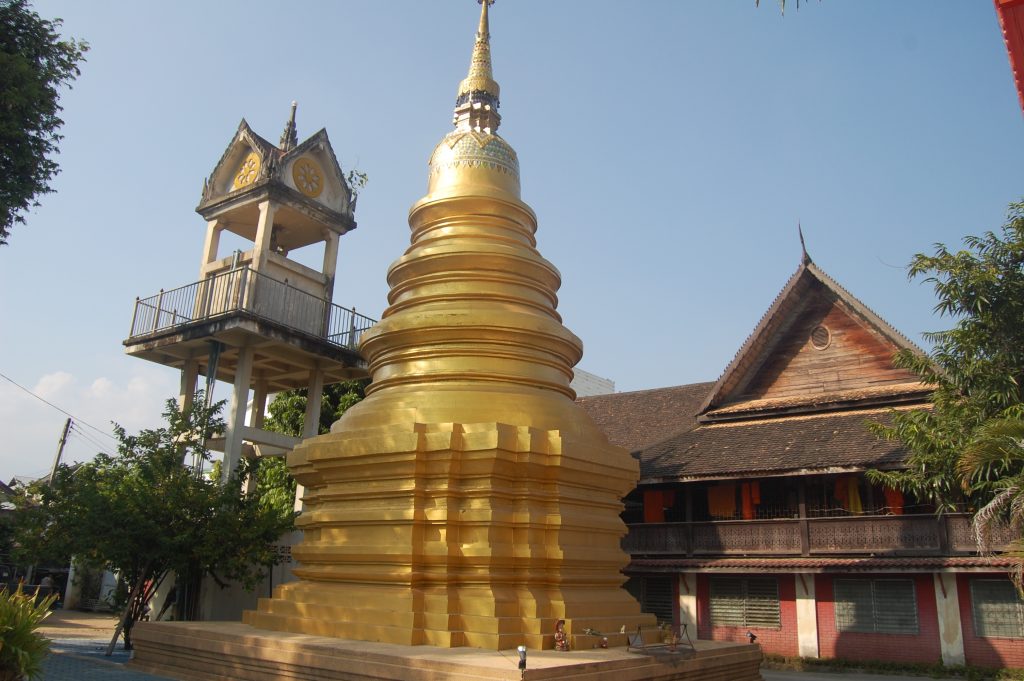
As we come back to the east wall and head north back to the gate we see little of the wall and the area outside the moat is heavily commercialized. There is one temple of historical significance this time within the walled city and that is Wat Sai Moon. ( also known as Wat Saimoon Muang ).
While the four mile walk around the old city could have taken from an hour or four depending on the time of each stop, you could spend days wandering inside the old city and still not see all the historical buildings and sights.
Did you enjoyed this Chaing Mai walking tour? I took a few hundred photos the week I was there. I also took a cooking class.
If you liked these photos of the Chaing Mai walking tour, You might want to check out my photo album on Flickr of the Nong Nooch Tropical Botanical Garden. The Nong Nooch Tropical Botanical Garden is a 500-acre botanical garden and tourist attraction outside of Pattaya Thailand
